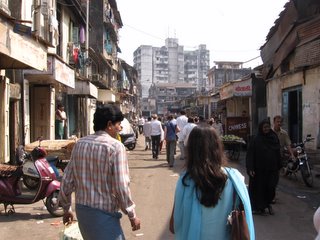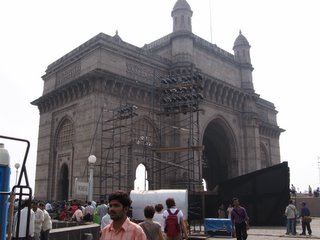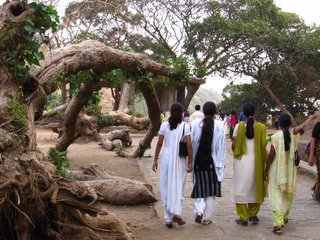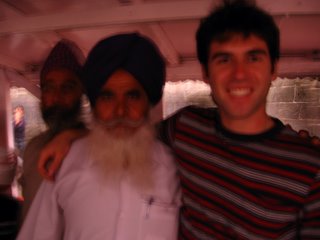
Friday we spent the day going to two STD clinics, one in the red light district and the other which is situated across the main street and has been renovated to include a museum used for sex education. While we visited the museum a batch of 13-15 year old boys were going through with their teacher. You would think that in the country where Kama Sutra was written that sex would not be as taboo as it is. Even one of the doctors in the HIV ward at Survoday hospital said that he had no problems talking about sex—so long as it wasn’t with his own children. In school it is sex education is called family health education in order to not raise any red flags. So, a museum with life size models of sexual organs and pictures of various STDs is quite progressive. So much so that it is singular in the whole country. Visitors receive a walk through explaining everything from basic anatomy to HIV awareness to dispelling myths about sex in the culture. The
 museum is on the second floor of what used to be the big STD clinic in that area, but since they had so many problems getting commercial sex workers going, they set up shop across the street in one of the alleys. An outpatient clinic is still there and used for HIV testing and a multitude of general medicine cases.
museum is on the second floor of what used to be the big STD clinic in that area, but since they had so many problems getting commercial sex workers going, they set up shop across the street in one of the alleys. An outpatient clinic is still there and used for HIV testing and a multitude of general medicine cases.Since the clinic set up shop closer to the red light district the prevalence of HIV in commercial sex workers has gone down fifteen percent. About five years ago it was at a staggering 65 % but now has lowered to one in two. For ten rupees an HIV test is conducted and patients can receive care for 10 days along with food and medication. The public health workers try to get the HIV negative workers in there every three to six months for testing. Out of curiosity I asked the head of the clinic on average how many customers a worker will have in a day. For someone that works closely with prostitutes I was a bit surprised to see how uncomfortable she was with my line of questioning. It turns
 out that a typical worker will get two to four customers per day, but can be up to six or so. So an HIV negative worker will see about 150 customers between testing by conservative calculations. Needless to say, being a prostitute in Bombay isn’t good for your health although the pay is better than a construction worker.
out that a typical worker will get two to four customers per day, but can be up to six or so. So an HIV negative worker will see about 150 customers between testing by conservative calculations. Needless to say, being a prostitute in Bombay isn’t good for your health although the pay is better than a construction worker.On a lighter side of things, I got to go the Elephanta Island. Situated of the coast of Bombay, it has caves dating back centuries that contain statues of the god Shiva in his different aspects. It took about an hour for us to get to South Bombay where we embarked at the Gate of India. This giant gateway was to commemorate the visit of King George and Queen Elizabeth but is remembered better as where the last British soldiers left India after independence.

The island was peaceful and it was nice to get away from city life for a bit. The pollution from the city was still noticeable in the air despite the hour ferry ride to get there. But, there was a distinct calmness to the island. Plenty of people were visiting that day and on the way home I made a friend. As I was talking with one of the girls in our group I noticed this Punjabi guy staring at me. I decided not to do anything simply because it was a bit uncomfortable. Punjabi men are very identifiable. Typically they wear colorful turbans with a white or off-white suit consisting of a long shirt and baggy pants. They also keep long beards and about 60 % are Sikh. After an hour return, as we are all getting ready to disembark, Surfjen approaches me and says, "I want to make friendship with you." This had me a bit scared and confused but he quickly made explained himself by repeating the words "pen-pal". I was pretty excited about having a pen-pal from Punjab and we exchanged addresses. Mom, Dad, let me know if you get a letter from India.




0 Comments:
Post a Comment
<< Home